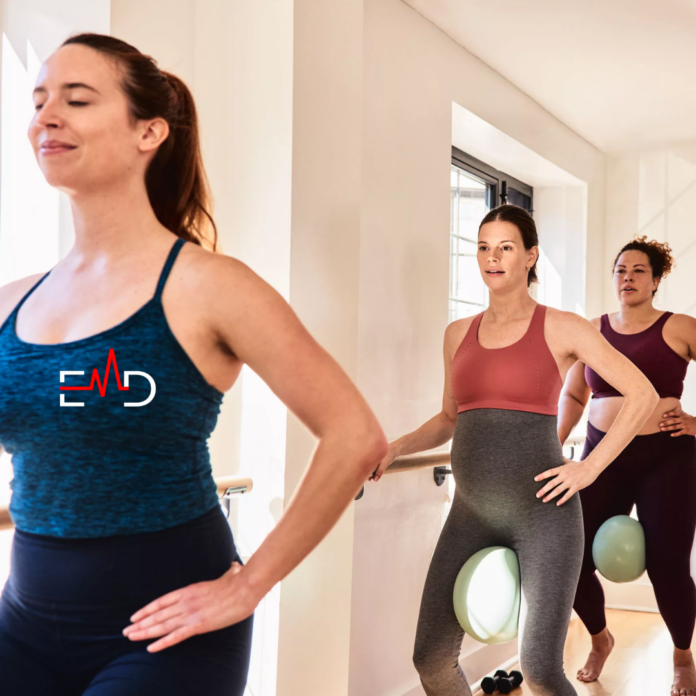
Exercise daily – Many of us spend hours hunched over our computers or smartphones, and maintaining good posture can be a constant challenge. However, the solution to better posture and a toned body may be closer than you think. Enter barre workouts – a fitness trend that has been gaining popularity for its ability to sculpt lean muscles, improve posture, and enhance overall body strength. In this blog post, we’ll explore the world of barre workouts and discover how they can help you achieve that toned physique you’ve always wanted while also standing tall and confident. Whether you’re a fitness enthusiast looking for a new challenge or someone seeking a way to alleviate posture-related discomfort, read on to learn how barre workouts can be your secret weapon for a healthier, more confident you.
What are Barre Workouts?
Barre workouts are a unique blend of ballet, Pilates, and strength training exercises that target specific muscle groups. They involve the use of a ballet barre (a horizontal handrail) for support, hence the name “barre.” These workouts have gained immense popularity in recent years due to their ability to sculpt lean muscles and improve posture.
Benefits of Barre Workouts
Barre workouts offer a wide range of benefits, including:
- Muscle Toning: Barre exercises target muscles you might not typically work in traditional workouts, leading to long, lean muscles.
- Improved Posture: The emphasis on core engagement and alignment helps improve posture and reduce back pain.
- Increased Flexibility: Barre incorporates stretching to enhance flexibility and range of motion.
- Low-Impact: They are gentle on your joints, making them suitable for various fitness levels.
Barre Workout Benefits for Athletes
The barre workouts can offer several benefits for athletes despite being a low-impact form of exercise primarily associated with ballet training. These workouts focus on small, controlled movements and often incorporate elements of dance, yoga, and Pilates. Here are some benefits of barre workouts for athletes:
1. Improved Strength
Barre exercises target specific muscle groups, especially the core, glutes, thighs, and calves. Strengthening these muscles can enhance an athlete’s overall strength, which is essential for sports performance.
2. Enhanced Flexibility
Many barre movements involve stretching and lengthening exercises, which can contribute to improved flexibility. Enhanced flexibility can help reduce the risk of injuries and improve range of motion in various athletic activities.
4. Balance and Stability
Barre workouts often include balance exercises that challenge an athlete’s stability. Better balance and stability can lead to improved coordination and agility, which are crucial for many sports.
5. Injury Prevention
By strengthening both large and small muscle groups, barre workouts can help prevent injuries by promoting better joint stability and muscle support.
6. Core Strength
A strong core is essential for athletes as it forms the foundation for many movements in sports. Barre exercises often place a significant emphasis on core engagement, helping athletes develop a strong and stable core.
7. Muscle Endurance
Barre workouts typically involve high-repetition, low-weight movements, which can improve muscle endurance. This is beneficial for athletes who need to perform repetitive motions over extended periods.
8. Mind-Body Connection
Barre workouts emphasize mindfulness and precision in movements. This can enhance an athlete’s mind-body connection, helping them better control their movements and perform with more accuracy in their sport.
9. Injury Rehabilitation
Barre workouts can be an excellent option for athletes recovering from injuries. They provide a low-impact way to rebuild strength and flexibility without putting too much strain on injured areas.
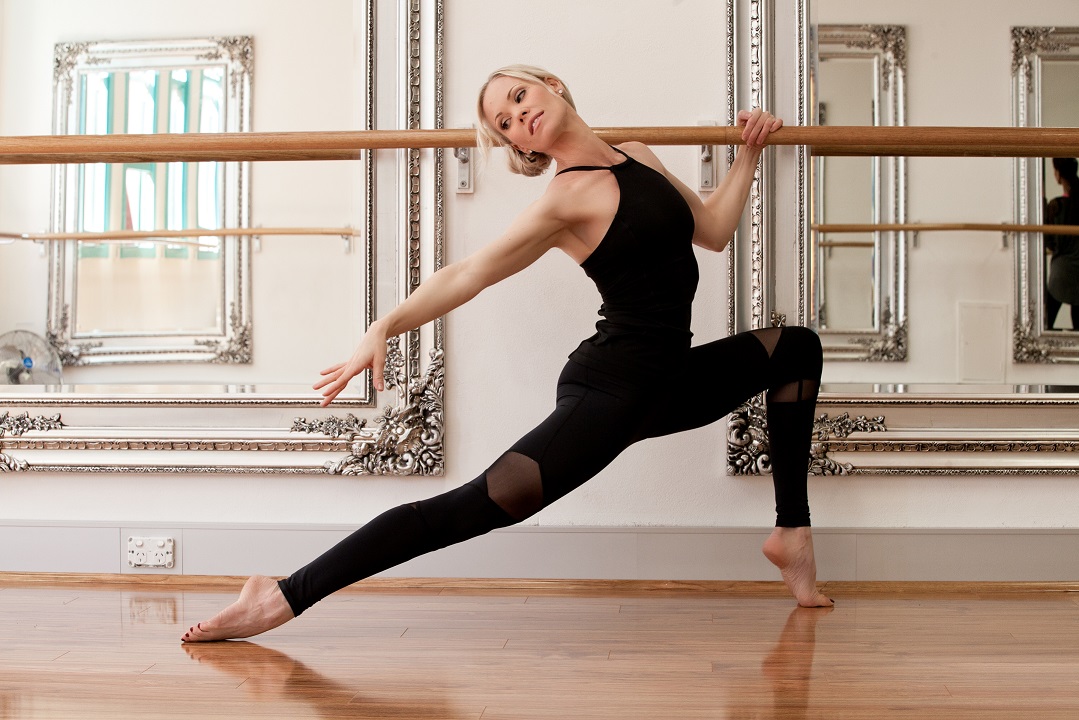
Getting Started
So, you’ve heard about the magic of barre workouts, and you’re eager to get started on your journey to a toned body. That’s fantastic! In this section, we’ll guide you through the initial steps to embark on your barre adventure.
1. Finding a Barre Class Near You
The first step is to find a barre class that suits your preferences and location. Whether you prefer the ambiance of a physical studio or the convenience of online classes, there are plenty of options available. Here’s how to go about it:
- Online Search: Use search engines or fitness apps to find barre classes near you. Include your location in the search query to narrow down the results.
- Social Media: Platforms like Instagram and Facebook often have local fitness groups and pages where you can discover nearby classes and read reviews from participants.
- Ask for Recommendations: Reach out to friends, family, or coworkers who may have experience with barre workouts. They can recommend classes or studios they’ve enjoyed.
- Read Reviews: Before committing, read reviews and testimonials about the classes or studios you’re interested in. Hearing from others can provide valuable insights.
- Trial Classes: Many studios offer trial classes or discounted first-time sessions. Take advantage of these to get a feel for the class and the instructor’s style.
2. What to Wear and Bring
Now that you’ve found a barre class that piques your interest let’s talk about what you should wear and bring to ensure a comfortable and productive experience.
i. Clothing:
- Comfortable Workout Attire: Opt for moisture-wicking, breathable clothing that allows for a full range of motion. Think leggings or capris and a fitted top.
- Grippy Socks: Barre studios often require or recommend grippy socks. These have rubberized soles that provide traction and stability during exercises.
ii. Accessories:
- Water Bottle: Staying hydrated during your workout is crucial. Bring a water bottle and take sips as needed.
- Yoga Mat: Some barre classes incorporate floor exercises, so it’s a good idea to bring a yoga mat for added comfort.
- Towel: A small towel can come in handy to wipe away sweat and keep yourself comfortable during the class.
- Hair Tie: If you have long hair, bring a hair tie to keep your hair out of your face while you work out.
iii. Mindset:
- Open Mind: Approach your first barre class with an open mind and a positive attitude. Be prepared to challenge yourself and embrace new movements.
- Patience: Barre workouts may feel unfamiliar at first, but with practice, you’ll improve. Be patient with yourself and focus on your progress.
- Listen to Your Body: Pay close attention to your body’s signals. If something doesn’t feel right or causes pain, it’s okay to modify or skip it.
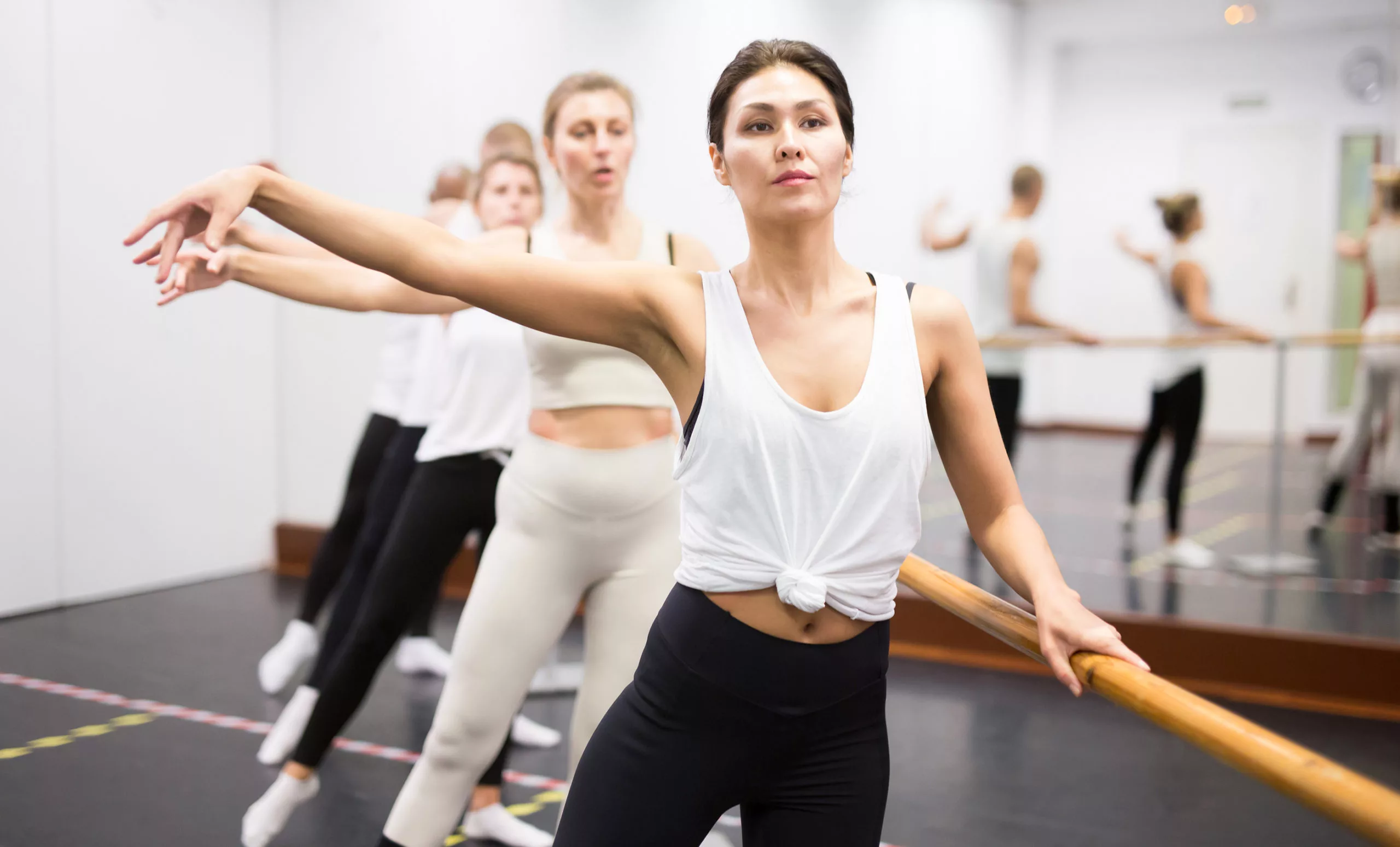
Barre Basics
Now that you’ve taken the first step and found the perfect barre class for you, it’s time to delve into the fundamentals of barre workouts. In this section, we’ll introduce you to the barre studio environment and walk you through some common barre exercises to give you a taste of what to expect.
1. The Barre Studio Environment
Before you step into your first barre class, it’s helpful to understand the unique studio environment that sets barre workouts apart from traditional gym experiences.
- Serene Atmosphere: Barre studios often cultivate a calming and focused atmosphere. Expect dimmed lights and soothing music to set the tone for your practice.
- Supportive Community: You’ll likely find a warm and welcoming community of fellow barre enthusiasts. Many participants appreciate the sense of camaraderie that develops in these classes.
- Ballet Barre: The centerpiece of the studio is, of course, the ballet barre – a horizontal handrail that extends along the walls. This is where you’ll perform many of your exercises, using it for balance and support.
- Props and Equipment: In addition to the barre, you’ll find props such as light weights, resistance bands, and balls. These tools enhance the effectiveness of your workout.
2. Common Barre Exercises
Barre workouts are renowned for their ability to target specific muscle groups and create long, lean muscles. Here’s a glimpse of some common barre exercises you’re likely to encounter:
- Plies: Plies involve bending your knees while keeping your heels together and toes turned out. This movement primarily targets your inner thighs and quads.
- Leg Lifts: Leg lifts, whether to the front, side, or back, work your lower body, particularly your glutes and outer thighs.
- Isometric Holds: These are static holds where you maintain a position, such as a wall sit or a low squat, for an extended period. They’re excellent for building endurance and strength.
- Pulses: Pulses are small, controlled movements within a larger range of motion. For example, you might pulse while holding a squat to intensify the burn in your muscles.
- Arabesque: This elegant move involves extending one leg straight behind you while leaning forward slightly. It engages your core and works on balance and flexibility.
Form and Technique
Now that you’ve dipped your toes into the world of barre workouts and learned about the basics, it’s time to emphasize the critical importance of proper form and technique. Correct form not only ensures that you get the most out of your workouts but also minimizes the risk of injury. In this section, we’ll delve into the nuances of maintaining the right form during your barre sessions and provide valuable tips to enhance your practice.
1. The Importance of Proper Form
Maintaining proper form during barre workouts is paramount. Here’s why it matters:
- Maximizing Muscle Engagement: Correct form ensures that you’re targeting the intended muscle groups effectively. It helps you achieve those long, lean muscles barre workouts are famous for.
- Injury Prevention: Proper alignment reduces the risk of strain or injury to your joints and muscles. It’s essential for a safe and sustainable practice.
- Posture Improvement: Barre exercises emphasize core engagement and alignment, which contribute to better posture both inside and outside the studio.
- Balance and Stability: Many barre moves require balance and stability. Good form enhances your ability to maintain these positions, enhancing your overall fitness.
2. Tips for Maintaining Correct Technique
Here are some valuable tips to help you maintain proper form during your barre workouts:
- Listen to Your Instructor: Pay close attention to your instructor’s cues and demonstrations. They will provide verbal and visual guidance to help you understand the correct form for each exercise.
- Engage Your Core: The core is central to barre workouts. Engage your abdominal muscles by pulling your navel toward your spine. This stabilizes your torso and supports your lower back.
- Alignment Matters: Focus on your alignment. In many exercises, proper alignment involves keeping your knees in line with your toes, shoulders relaxed, and hips squared.
- Controlled Movements: Avoid rushing through exercises. Perform each movement with control and intention, even if it means doing fewer repetitions. Quality over quantity is key.
- Breathe Deeply: Don’t forget to breathe! Inhale through your nose and exhale through your mouth. Deep, controlled breaths help you maintain focus and engage your core.
Progressive Workouts
Congratulations on mastering the fundamentals and honing your form in barre workouts. Now, let’s explore how you can take your barre practice to the next level through progressive workouts. These strategies will help you challenge your body, track your progress, and continue on the path to a toned physique.
1. Advancing Your Barre Practice
As you become more experienced with barre, it’s essential to add variety and challenge to your workouts. Here are some ways to advance your practice:
- Increase Resistance: Gradually incorporate heavier weights or resistance bands into your routine. This added resistance intensifies your muscle engagement.
- Deeper Movements: Focus on increasing your range of motion in exercises like plies and leg lifts. The deeper you can go while maintaining proper form, the more you’ll work your muscles.
- Hold Positions Longer: Extend the duration of isometric holds to build strength and endurance. Challenge yourself to hold positions for an extra 5-10 seconds.
- Add Balance Challenges: Incorporate balance exercises, such as one-legged positions, arabesques, or relevés. These moves engage your core and improve stability.
- Combine Movements: Create sequences that flow from one exercise to another. This dynamic approach keeps your muscles engaged and your heart rate up.
2. Tracking Your Progress
To stay motivated and measure your advancements in barre workouts, consider these tracking methods:
- Keep a Workout Journal: Record details of each session, including the exercises, sets, reps, and any modifications or challenges you faced. This provides insights into your progress.
- Take Photos: Periodically snap photos to track changes in your body visually. Sometimes, these changes are more noticeable in pictures than on the scale.
- Set Goals: Establish clear, achievable fitness goals. Whether it’s increasing the number of push-ups or holding a plank for an extra 10 seconds, having goals gives your workout purpose.
- Celebrate Milestones: Celebrate your achievements along the way. Recognize and reward yourself when you hit a specific milestone or conquer a challenging exercise.
- Measurements: Track your body measurements (waist, hips, thighs, etc.) to monitor changes in your physique, even when the scale isn’t moving.
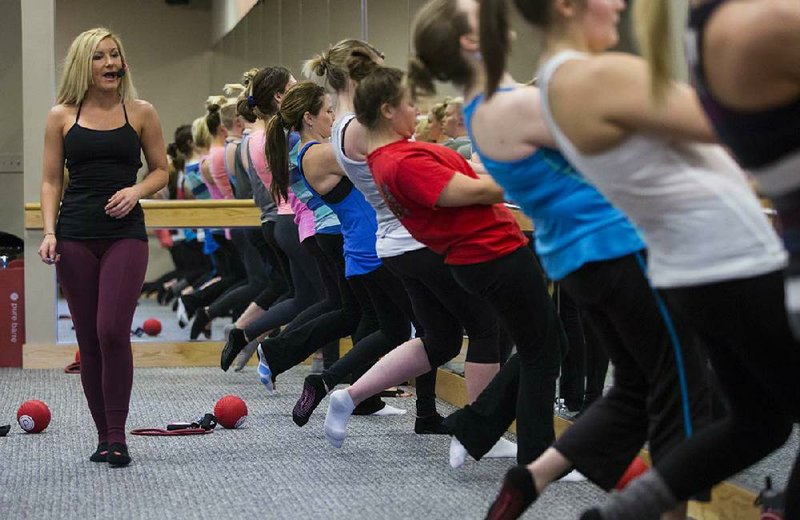
Dietary Considerations
While barre workouts play a significant role in sculpting a toned body, your diet is equally essential for achieving optimal results. Proper nutrition fuels your body, supports muscle growth, and aids in fat loss. In this section, we’ll explore dietary considerations to complement your barre practice and help you achieve your fitness goals.
1. Fueling Your Barre Workouts
To make the most of your barre sessions, consider these dietary tips:
- Pre-Workout Snack: Consume a small, balanced snack about 30 minutes to an hour before your workout. Ideal options include a banana with almond butter, yogurt with berries, or a handful of nuts.
- Stay Hydrated: Dehydration can lead to fatigue and decreased workout performance. Drink water throughout the day, and consider sipping on electrolyte-rich beverages during intense workouts.
- Post-Workout Nutrition: After a barre class, refuel with a combination of protein and carbohydrates. A protein shake, a turkey and avocado wrap, or a smoothie with greens and fruit can aid in muscle recovery.
- Balanced Meals: In your regular meals, strive for a balanced mix of lean proteins (chicken, fish, tofu), complex carbohydrates (quinoa, sweet potatoes), healthy fats (avocado, nuts), and plenty of vegetables.
2. The Role of Nutrition in Toning
Understanding the connection between nutrition and muscle definition is vital:
- Protein for Muscle: Protein is crucial for repairing and building muscles. Include sources like lean meats, eggs, legumes, and dairy in your diet to ensure an adequate intake.
- Carbohydrates for Energy: Carbohydrates provide the energy you need for your barre workouts. Opt for whole grains, fruits, and vegetables to sustain your energy levels.
- Healthy Fats: Healthy fats are essential for overall health and hormone balance. Incorporate avocados, nuts, seeds, and olive oil into your diet.
- Portion Control: Be mindful of portion sizes to avoid overeating. Use smaller plates, and listen to your body’s hunger and fullness cues.
- Hydration: Proper hydration supports digestion, nutrient absorption, and overall well-being. Drink water regularly throughout the day.
Incorporating Barre Into Your Routine
Now that you’ve gained insight into the world of barre workouts and the role of proper nutrition, it’s time to explore how to integrate barre into your overall fitness routine seamlessly. Balancing your workouts and finding the right frequency is essential for achieving and maintaining a toned body. In this section, we’ll guide you on how to incorporate barre workouts effectively.
1. How Often Should You Do Barre?
Determining the frequency of your barre workouts depends on your fitness goals, schedule, and current fitness level. Here are some general guidelines:
- Beginner Level: If you’re new to barre or exercise in general, starting with 2-3 sessions per week is a good approach. This allows your body to adapt gradually.
- Intermediate Level: For those with some experience, aim for 3-4 barre classes weekly. This frequency provides a balance between challenge and recovery.
- Advanced Level: If you’re looking to accelerate your progress, 4-5 weekly sessions may be appropriate. Be attentive to your body’s signals and ensure you’re giving yourself adequate rest.
- Combination Workouts: If you’re incorporating other forms of exercise into your routine, such as cardio or strength training, you can reduce the number of barre sessions accordingly. For instance, 2-3 barre workouts in conjunction with other activities can be effective.
- Listen to Your Body: Regardless of your fitness level, always listen to your body. If you feel exhausted or sore or notice decreased performance, consider taking an extra rest day.
2. Combining Barre with Other Exercises
The versatility of barre workouts makes them an excellent complement to other forms of exercise. Here’s how to combine barre effectively with other activities:
- Cardio: Pairing barre with cardiovascular workouts, such as running or cycling, can create a well-rounded fitness routine. Alternate days of cardio with barre to enhance endurance and muscle tone.
- Strength Training: Incorporating strength training, such as weightlifting, can help build lean muscle mass. Balance your routine by alternating between barre and strength sessions.
- Yoga or Pilates: If you enjoy mind-body practices like yoga or Pilates, consider adding barre to your repertoire. The combination of these practices can improve flexibility, balance, and muscle endurance.
- Rest Days: Don’t underestimate the importance of rest days. On days when you’re not doing structured workouts, engage in active recovery like walking, swimming, or gentle stretching to aid in muscle repair and overall well-being.
- Cross-Training: Periodically change up your routine to prevent plateaus and keep things interesting. Cross-training not only benefits your physical health but also prevents mental burnout.
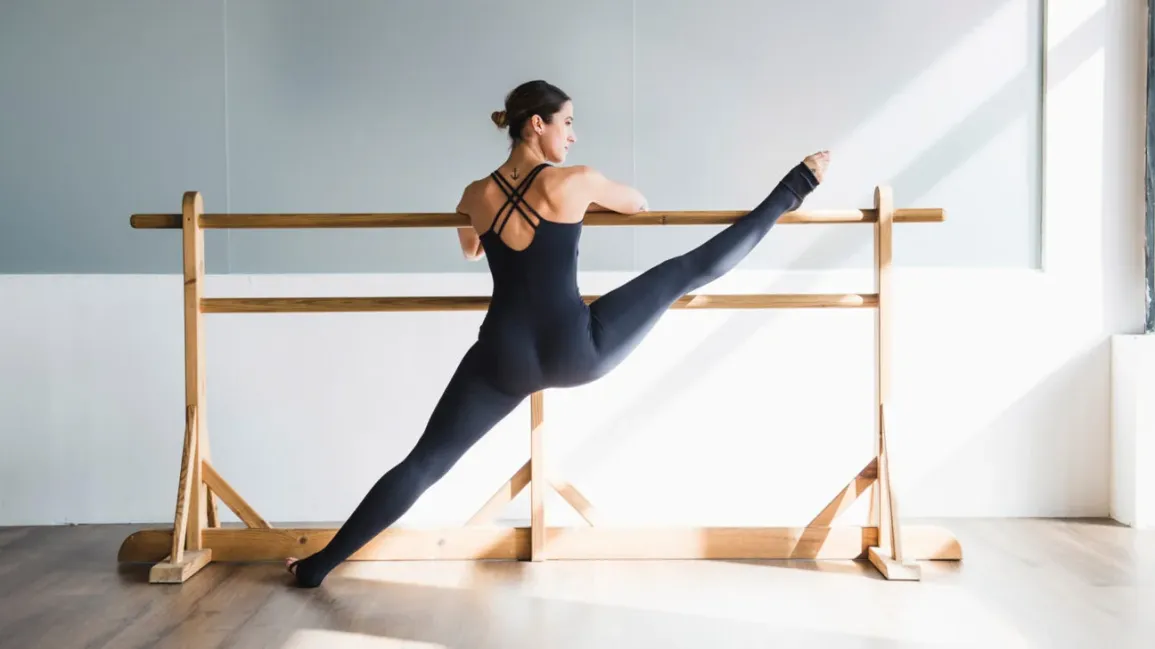
Barre for Different Fitness Levels
One of the remarkable aspects of barre workouts is their adaptability to various fitness levels. Whether you’re a beginner with little exercise experience or an advanced practitioner seeking a new challenge, barre can accommodate your needs. In this section, we’ll explore how barre workouts can be tailored to different fitness levels.
1. Beginner-Friendly Modifications
If you’re new to exercise or barre, the following modifications can help you ease into your practice and build confidence:
- Lower Intensity: Begin with lower-intensity classes labeled as “beginner” or “foundations.” These sessions typically include slower movements and more detailed instructions.
- Lighter Weights: When using weights or resistance bands, start with lighter options to avoid straining your muscles. You can gradually increase the resistance as you become more comfortable.
- Chair or Wall Support: Use a chair or wall for additional balance and support during exercises that challenge your stability. This is particularly helpful if you’re working on balance and flexibility.
- Simplified Movements: Instructors often offer simplified versions of exercises, especially for newcomers. These versions reduce the complexity and make it easier to focus on proper form.
- Shorter Durations: Initially, limit the duration of your workouts to avoid overwhelming yourself. As you gain strength and stamina, you can extend your workout sessions.
2. Challenging Variations for Advanced Practitioners
For those who have mastered the fundamentals of barre and want to up the ante, advanced variations offer new challenges:
- High-Intensity Classes: Explore high-intensity barre classes that incorporate faster tempos and dynamic movements. These sessions increase the cardiovascular component of your workout.
- Heavier Weights: Gradually switch to heavier weights or resistance bands to intensify strength training exercises. This promotes muscle growth and definition.
- Advanced Balance Exercises: Challenge your balance by incorporating one-legged movements, such as arabesques and relevés, into your routine.
- Increased Repetitions: Perform more repetitions of exercises to enhance endurance and muscle fatigue. This is particularly effective for toning.
- Complex Combinations: Engage in complex combinations that flow seamlessly from one exercise to another. These sequences test your coordination and core strength.
Mind-Body Connection
Barre workouts go beyond physical fitness; they also offer a unique opportunity to cultivate a strong mind-body connection. In this section, we’ll explore how practicing mindfulness during your barre sessions can enhance your overall well-being and contribute to achieving a toned body.
1. Mindfulness and Barre
Mindfulness involves paying deliberate attention to the present moment without judgment. When applied to barre workouts, it can have profound benefits:
- Focus on Movements: Mindfulness encourages you to be fully present during each exercise. This heightened awareness allows you to perform movements with precision and intention, maximizing their effectiveness.
- Improved Form: Mindful attention to your body’s alignment and posture helps you maintain proper form throughout your workouts. This minimizes the risk of injury and ensures that you’re targeting the right muscle groups.
- Enhanced Mind-Muscle Connection: As you practice mindfulness, you become more attuned to the sensations in your muscles. This increased mind-muscle connection allows you to engage specific muscle groups more effectively during exercises.
- Stress Reduction: Mindfulness techniques, such as deep breathing and focused attention, can help reduce stress and anxiety. Barre workouts become an opportunity for relaxation and a mental break from daily stressors.
- Increased Body Awareness: Over time, mindfulness fosters a deeper understanding of your body. You become attuned to its strengths and limitations, enabling you to make informed choices during workouts.
- Enhanced Balance and Coordination: Mindfulness practices improve balance and coordination by promoting a heightened sense of proprioception – your body’s awareness of its position in space.
2. Stress Reduction Benefits
Barre workouts provide an ideal environment for stress reduction:
- Soothing Atmosphere: Barre studios often create a calming ambiance with soft lighting and calming music, which contributes to stress reduction.
- Focused Breathing: Mindful breathing techniques are an integral part of barre workouts. Deep, rhythmic breaths help activate the parasympathetic nervous system, promoting relaxation.
- Endorphin Release: Physical activity, such as barre, triggers the release of endorphins – natural mood lifters that reduce stress and boost overall well-being.
- Mindful Movement: Barre exercises require concentration and focus, diverting your mind from daily worries and promoting a sense of mindfulness.
3. Incorporating Mindfulness
Here’s how to incorporate mindfulness into your barre practice:
- Set an Intention: Before each workout, set a positive intention for your session. This could be a specific goal, such as maintaining proper form or improving your balance.
- Breathe Mindfully: Pay close attention to your breath throughout your workout. Inhale deeply through your nose and exhale slowly through your mouth, syncing your breath with your movements.
- Stay Present: Avoid distractions and mental chatter. Keep your attention on the exercises, your body’s sensations, and your breath.
- Use Positive Affirmations: Incorporate positive affirmations or mantras during your practice to boost confidence and motivation.
- Reflect Afterward: Take a moment after your workout to reflect on how you feel both physically and mentally. Recognize any progress or achievements.
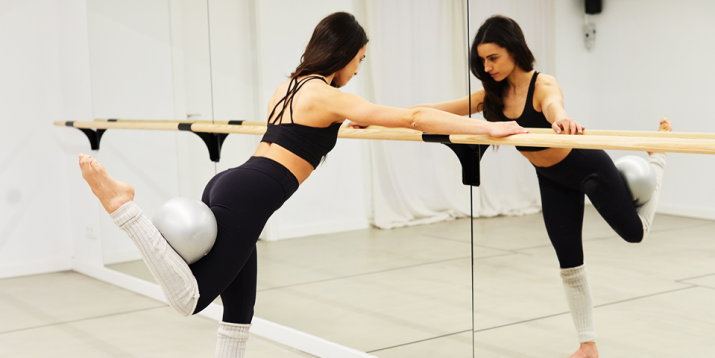
Barre Myths Debunked
In the world of fitness, myths and misconceptions often abound, and barre workouts are no exception. It’s essential to separate fact from fiction to make informed decisions about your fitness routine. In this section, we’ll debunk common myths surrounding barre workouts.
Myth 1: Barre Is Only for Dancers
While barre workouts draw inspiration from ballet, you don’t need a dance background to participate. Barre classes are designed to be accessible to people of all fitness levels, and the exercises can be modified to suit various abilities. Many participants have never danced before but still enjoy the benefits of barre, including improved strength, flexibility, and balance.
Myth 2: Barre Is Easy and Low-Impact
Barre workouts may appear graceful, but they are far from easy. The slow, controlled movements target specific muscle groups and can be extremely challenging, even for seasoned athletes. Barre sessions often incorporate isometric holds and high-repetition exercises that can leave you feeling the burn. While barre is low-impact and gentle on the joints, it can provide a rigorous workout that yields impressive results.
Myth 3: Barre Won’t Help You Lose Weight
While barre primarily focuses on muscle toning and endurance, it can contribute to weight loss when combined with a balanced diet and other forms of exercise. The calorie burn from a barre workout, especially in high-intensity classes, can aid in weight management. Additionally, building lean muscle through barre can boost your metabolism, making it easier to maintain a healthy weight.
Myth 4: Men Don’t Do Barre
Barre workouts are not gender-exclusive. Men can benefit from barre just as much as women. Barre exercises enhance overall strength, flexibility, and balance, which are valuable for everyone. Many men have embraced barre as a valuable addition to their fitness routine, and some studios even offer classes specifically tailored to men’s needs.
Myth 5: Barre Is Only for Young People
Barre is suitable for individuals of all ages. It’s a versatile workout that can be adapted to accommodate various fitness levels and physical capabilities. In fact, many older adults find barre to be an excellent way to maintain strength and mobility. It’s never too late to start reaping the benefits of barre, regardless of your age.
Myth 6: You Need to Be Flexible to Do Barre
While flexibility can be an asset in barre, it’s not a prerequisite. Barre classes include stretches and movements designed to improve flexibility gradually. Over time, regular participation in barre can enhance your range of motion and flexibility. It’s more important to focus on proper form and technique, which can be achieved regardless of your current flexibility level.
Myth 7: Barre Only Works Specific Muscle Groups
While barre exercises do target specific muscle groups, they also engage the entire body. Barre routines are designed to be full-body workouts, incorporating exercises that work muscles from head to toe. The combination of isometric holds, dynamic movements, and core engagement ensures that you get a comprehensive workout.
Conclusion
Incorporating barre workouts into your fitness routine is a fantastic way to achieve a toned body while enjoying a unique and engaging exercise experience. Remember, consistency is key, and with dedication and proper form, you can sculpt the body you desire.
FAQs
Q: How soon can I expect to see results from Barre?
The timing varies, but many people notice improved muscle tone and posture within a few weeks of regular practice.
Q: Can I do Barre if I have no dance experience?
Absolutely! Barre workouts are designed for all fitness levels, and no dance background is required.
Q: Is Barre a low-impact workout?
Yes, barre is considered a low-impact workout, making it suitable for individuals with joint issues or those looking for a gentler fitness option.
Q: Do I need special equipment for Barre?
Most studios provide the necessary equipment, including the barre itself. You’ll need comfortable workout attire and grippy socks.
Q: Can Barre help with weight loss?
While barre primarily focuses on muscle toning, it can contribute to weight loss when combined with a balanced diet and other forms of exercise.




